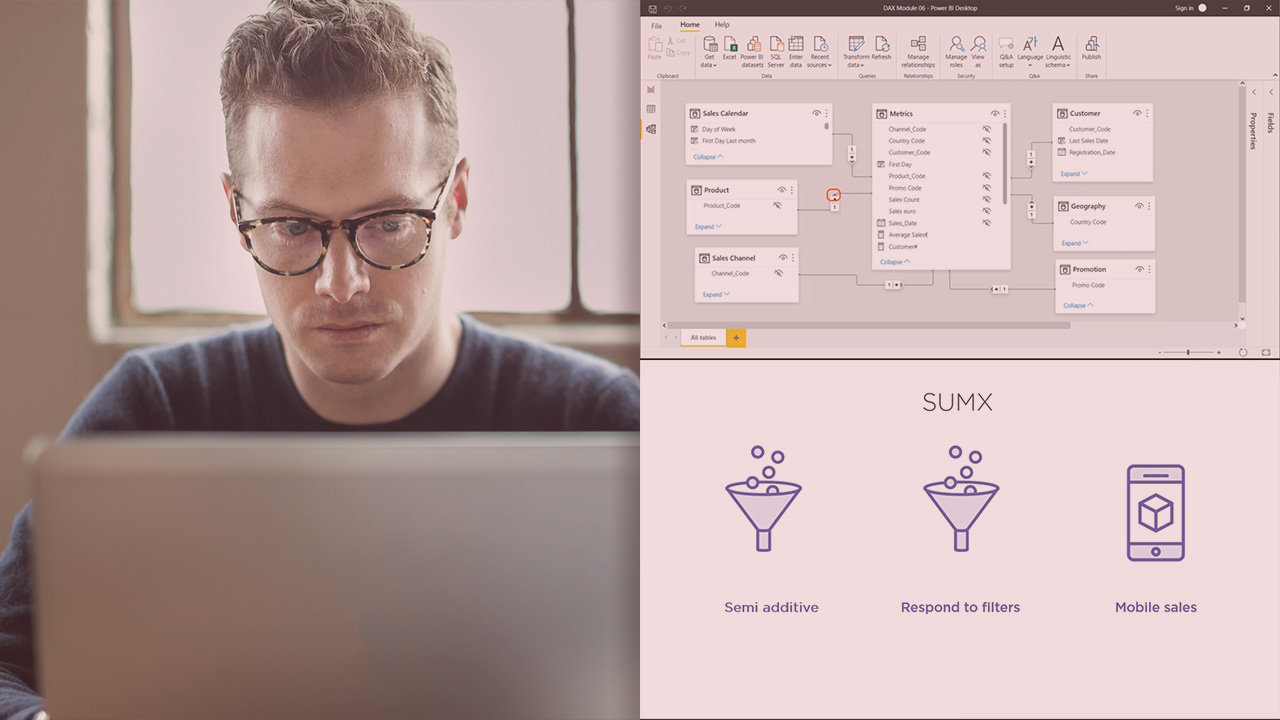- Course
Common DAX Expressions and Scenarios Power BI Playbook
In this course we'll build an intelligent data model to facilitate sales analysis for an online clothing retailer with the DAX Language in Power BI Desktop. Completing this course will grant you the knowledge needed to create data objects with DAX.

- Course
Common DAX Expressions and Scenarios Power BI Playbook
In this course we'll build an intelligent data model to facilitate sales analysis for an online clothing retailer with the DAX Language in Power BI Desktop. Completing this course will grant you the knowledge needed to create data objects with DAX.
Get started today
Access this course and other top-rated tech content with one of our business plans.
Try this course for free
Access this course and other top-rated tech content with one of our individual plans.
This course is included in the libraries shown below:
- Data
What you'll learn
As a data professional, have you ever wanted to produce an array of data objects using the DAX language? In this course, Common DAX Expressions and Scenarios Power BI Playbook, you will learn foundation skills in dimensional modelling and programming with the DAX Language in Power BI Desktop. First, you will learn the basic design principles. Next, you will discover how to write DAX code to implement the basic model framework. Finally, you will explore the DAX language and use it to extend and enhance the model. When you have completed this course, you will have the skills and knowledge needed to make your data available via a robust and flexible self service analytical interface. Software required: Power BI Desktop.
Common DAX Expressions and Scenarios Power BI Playbook
-
A Structured Approach to Power Bi Design | 5m 56s
-
Building a Foundation | 2m 43s
-
What Is a Dimensional Model? | 2m 3s
-
What Does a Dimensional Model Do | 6m 1s
-
The Dimensional Modelling Process | 3m 37s
-
Exploring the Data | 6m 49s
-
Designing the Data Model | 2m 57s
-
Creating Dimension Tables with GROUPBY | 6m 24s
-
Creating a Fact Table with SUMMARIZECOLUMNS | 5m 24s
-
Creating Data Star with the Model Tool | 5m 4s

